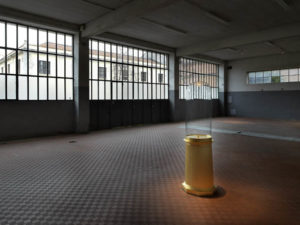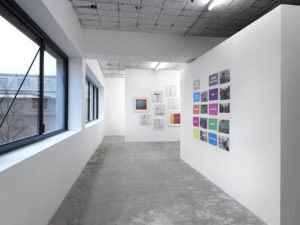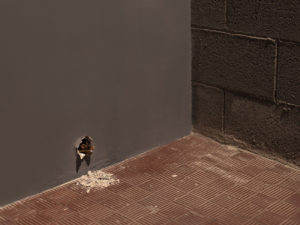Fondazione ICA Milano – Institute for Contemporary Arts, a non profit space dedicated to the arts, contemporary culture, research and experimentation, opens its doors in Milan in the name of inclusion. Based in the ex-industrial area of Via Orobia, the museum inaugurates its program with the collective exhibition Apologia della Storia – The Historian’s Craft, curated by Alberto Salvadori and Luigi Fassi.
The show is inspired by a contemporary reflection on the theme of history, thought as tool of investigation and as methodology of knowledge of the present. The title of the exhibition is based on the book Apologie pour l’histoire ou Métier d’historien by the great french historian Marc Bloch, written in 1940 and published posthumous in the 1949. Marc Bloch’s reflection must be considered as a discourse on the scientific method of the historical research, but, above all, as “a heartfelt defense of history as a humanistic discipline, inspired by the desire to understand the human being in the complexity of his events”. To focus the attention on the complexity of the human stories means to understand that the human being is the center of the history, he is the protagonist and it is necessary to chase the traces of his action, over the course of time.
History is a living matter, that thanks to the recovery of a collective memory, allows a better knowledge of the past, and this knowledge becomes, in turn, a useful tool to face the contemporary issues. This is possible through an incessant exchange between the past and the present, a fluid and continuous work of interpretation and discovery. In the center of the historical reaserch there is the “concrete human beings who suffer but also make history”. The time becomes a concrete material and this element unites art and history. Another point of contact between artistic practice and historical practice can be founded in the fact that both the disciplines use interpretative tools that, inevitably, cannot be purely rational and technical, because there is always a poetic and creative component in both areas.
The artists in show are Yto Barrada, Lothar Baumgarten, James Lee Byars, Nanna Debois Buhl, Ryan Gander, Haroon Gunn-Salie, Arjan Martins, Santu Mofokeng, Antonio Ottomanelli, Paul Pfeiffer, Javier Téllez, Mona Vatamanu & Florin Tudor.
The goal is to consider the present under the light of some historical events that have marked our recent past.
The work The Conscience (1985) by James Lee Byars opens the exhibition. A mysterious and fascinating sculpture in glass, wood and gold sets the spectator in a reflexive dimension. The atmosphere is dense and deep, almost mystic. It becomes possible to meditate on the idea of conscience, on the cognitive and interpretative limits and possibilities of the human mind.
Yto Barrada’s work is particularly interesting, entitled Plumbers Assemblage (2014). It is composed by a series of ten photos taken in Piazza Gran Socco in Tangeri. There are faucets and pipes oddly assembled by unemployed plumbers. The compositions have the goal to signal the availability to the work. This gesture assumes a great political value, underlining the extreme gravity of the lack of work that torments the contemporary society.
Mona Vatamanu and Florin Tudor present a filmic work extremely poetic: Right of Spring (2010), that starts from a simple gesture: some children burn piles of poplar pollen in the streets of Bucharest. This action is a symbol of hope, change and renewal, in fact the small fires and the red sparks, that dance in the city roads, become the sign of an innocent desire of change, evoking the dream of a different world, more fair and free.
Finally a particular attention is reserved to Antonio Ottomanelli’s project. The Italian artist presents a series of works able to make to converse, in a poetic way, the collective memory and the individual one. The artist becomes an investigator that works connecting two dimensional planes: the past and the present.The photographic series Great Baghdad Garden (2010-2014) shows very well the interpretative and constructive ability of the artist. Ottomanelli presents the images of the park of Baghdad Al – Zawara, center of the zoological garden of the city. Observing the work, we can see clearly as the war determines a radical transformation of the collective memory of a place and of a whole society. The work stays exactly in a median point, between destruction and possible reconstruction.
The whole exhibition reflects, with competence and precision, on the possible historical oscillation between annihilation and construction. In this way, as the curators think “the art of historical observation manifests the amazement of waiting to understand dimensions of temporality and reaveals the ability to mitigate the melancholy of finitude with the will of life to renew itself and continue to marvel”.
Info:
Apologia della Storia – The Historian’s Craft
ICA Milano
Via Orobia 26, 20139 Milano
25/01/2019 – 15/03/2019
Opening hours: Thursday, Friday, Saturday, Sunday from 12 to 20
Closed from Monday to Wednesday.
Free entry
 James Lee Byars, The Conscience, 1985 Ph. Dario Lasagni
James Lee Byars, The Conscience, 1985 Ph. Dario Lasagni
 Paul Pfeiffer, Study for Incarnator 2018 Ph. Dario Lasagni
Paul Pfeiffer, Study for Incarnator 2018 Ph. Dario Lasagni
 Background: Yto Barrada, Plumber Assemblage, 2014 e Untitled (felt circus flooring, Tangieri), 2013-2015
Background: Yto Barrada, Plumber Assemblage, 2014 e Untitled (felt circus flooring, Tangieri), 2013-2015
Right: Haroon Gunn-Salie, History after apartheid, 2015 Ph. Dario Lasagni
 Ryan Gander, 2000 year collaboration (The Prophet) 2018
Ryan Gander, 2000 year collaboration (The Prophet) 2018

Andrea Grotteschi (1987) lives and works between Lake Maggiore and Milan. He graduated in Aesthetics at the University of Milan in 2013. After his studies he began his curatorial activity in the field of contemporary art and culture, collaborating in particular with the cultural association Asilo Bianco. He has curated public cultural and exhibition projects, such as Studi Aperti Arts Festival (2015, 2016) and Sor’riso Amaro. Work and the paddy field, contemporary visions (2017). Since 2018 he works as an independent curator and critic.






NO COMMENT